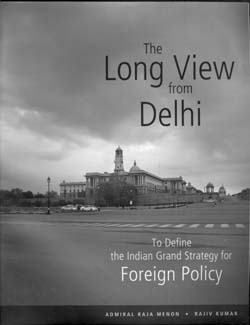Strategic thought through the ages has been driven by the need to deal with the future. The safety and well being of kingdoms, monarchies, nation states, regional or global powers, as well as of virtual states like the modern multinational corporations, depended on knowing the future scenarios in which they will function. Such scenarios took into account future threats and adversaries, and provided pointers for anticipatory measures to be taken. Since capability to face such scenarios takes a long time and even more, a great national effort to create, future projections assume special value to policy planners. National strategies depend overwhelmingly on assessments of the future circumstances that will arise. No country can afford not to spend effort on identifying strategic futures in the economic, security, technical and social dimensions. The Long View from Delhi sets out to visualize the scenarios in the coming decades in which India will need to function. A new tool which became available to planners and strategic analysts in the late 1970s was the methodology of Net Assessment.
Raja Menon and Rajiv Kumar attempt to make use of this approach to visualize global scenarios in the coming decades and identify strategic choices which India will be required to make. They make very worthwhile recommendations on the changes that will be essential to benefit from a better understanding of the scenarios. The slim volume of less than 200 pages packs a great deal in charts and graphs, taken from known sources to extrapolate and analyse the future.

